From the end of Genoa's dominion to the entrance into the Modern Age
The painful consequences of the justified but too disorganised Sanremo riot of 1753 had dragged on until the end of the 18th century, when from nearby France came winds of a 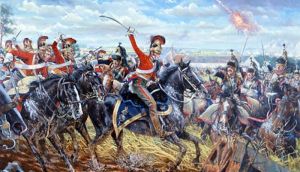 much wider and more determined revolution and the plan to create a great empire from the Pyrenees to the Alps and the Rhine, once again claiming the territories of Savoy and Nice.
much wider and more determined revolution and the plan to create a great empire from the Pyrenees to the Alps and the Rhine, once again claiming the territories of Savoy and Nice.
After some unsuccessful diplomatic actions in 1793 and furious battles between the French and Austro-Sardinians in the Alpes-Maritimes, which were also favourable to the Savoy, it was the turn of the naval attack of Oneglia, sacked and set on fire (22nd October 1793).
The following year, under the pretext of annihilating a dangerous group of corsairs, known as the 'Tigris of Oneglia', which caused serious hindrance to both 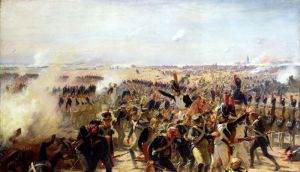 the French and the Genoese, but in order to secure Oneglia, Loano and the Tenda hill, and then to be able to go down to Piedmont, the French army announced the need to « pass the troops over part of the territory of Genoa... according to the laws of the strictest neutrality, which will be respected religiously ».
the French and the Genoese, but in order to secure Oneglia, Loano and the Tenda hill, and then to be able to go down to Piedmont, the French army announced the need to « pass the troops over part of the territory of Genoa... according to the laws of the strictest neutrality, which will be respected religiously ».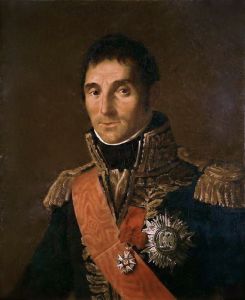 On 6th April 1794 a part of the 'Armée d'Italie' crossed the border of Ventimiglia, strong with 20,000 men and a few cannons.
On 6th April 1794 a part of the 'Armée d'Italie' crossed the border of Ventimiglia, strong with 20,000 men and a few cannons. 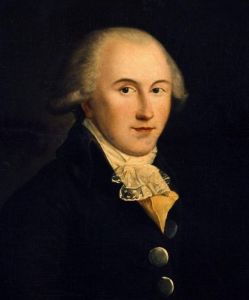 It was commanded by General Masséna, an officer of Nice; the artillery depended on the young commander General Napoleon Bonaparte, representative of the Revolution was Agostino Robespierre, Maximilian's brother, and commissioner of the people Filippo Buonarroti.
It was commanded by General Masséna, an officer of Nice; the artillery depended on the young commander General Napoleon Bonaparte, representative of the Revolution was Agostino Robespierre, Maximilian's brother, and commissioner of the people Filippo Buonarroti.
 The complex actions of the military campaign, which invested the entire territory of the current province of Imperia, despite the defects of strategy and the unexpected, heavy snowfall in the mountains, led to the occupation of Oneglia and Loano, the capitulation of the fortress of Saorgio in the Roia valley, the control of the pass of the Col di Tenda.
The complex actions of the military campaign, which invested the entire territory of the current province of Imperia, despite the defects of strategy and the unexpected, heavy snowfall in the mountains, led to the occupation of Oneglia and Loano, the capitulation of the fortress of Saorgio in the Roia valley, the control of the pass of the Col di Tenda.
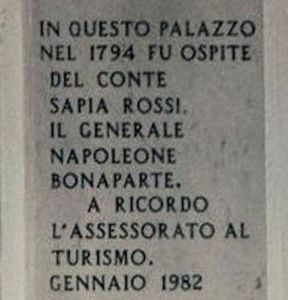 In September, with the expedition of Dego, requested by Napoleon, the French defeated the Austrian army and secured control of the port of Vado.
In September, with the expedition of Dego, requested by Napoleon, the French defeated the Austrian army and secured control of the port of Vado.
It was on this occasion that the French commanders Masséna and Bonaparte stopped in San Remo on 7th September 1794, guests at the Sapia house. To a comment by G.B. Borea on recent military episodes and the fear of war, Napoleon replied: « Better for you, you will be French sooner ».
The passage and the occupation of the French troops for two years (April 1794-April 1796) of the territory of western Liguria caused predictable abuses, looting and violence, of which the inhabitants of the inland villages were the main victims; on the coast the very strict orders issued by the commanders reduced 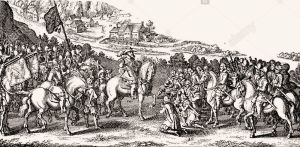 the damage. In San Remo the revolutionaries did not occupy the fort and they only demanded the liberation of Giancarlo Serra and Gaspare Sauli, who were imprisoned in Genoa.
the damage. In San Remo the revolutionaries did not occupy the fort and they only demanded the liberation of Giancarlo Serra and Gaspare Sauli, who were imprisoned in Genoa.
In general, the French troops were preceded by the flight of the terrified populations (40,000 left the valley of Oneglia), abandoned to their fate both by Genoa, formally neutral, and by the Piedmontese.
While the attitude of the people was of impotent hatred towards the French, the Genoese government was tolerant and minimised the extent of the abuses. In San Remo, the people's disposition was more complex, torn between fear of revolutionaries and hatred towards Genoa.
However, it was poverty, famine, epidemics, requisitions of hay and the arrest of land and sea traffic that pushed groups of citizens in San Remo to make anti-French speeches, which became violence when the Genoese commissioner Spinola, in August 1795, hesitated before authorising the distribution of 500 quintals of wheat from Piedmont to hungry families.
But the popular indignation against the French revolutionaries, considered 'sacrilegious and bloody', was also born out of moral reasons.
With the application of special laws, in 1795 the bells were removed from the churches, except for one, which could not be rung, there was a ban on processions, the administration of the viaticum, the accompaniment of the dead to the cemetery, the celebration of religious services; the sacred images were destroyed, the noble emblems on the portals of the chiselled houses.
In 1796 in San Remo the town council and numerous citizens were waiting to obtain reimbursement of almost 73,000 lire spent on behalf of the French.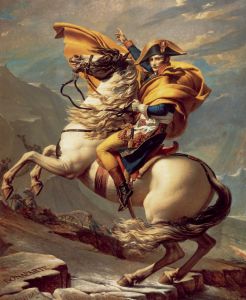 In the same yerar Napoleon, under the command of the French army, returned to western Liguria and was easily right of the Piedmontese, forced to sign the armistice of Cherasco. In May 1797 the revolution reached Genoa and the Ligurian Republic was born.
In the same yerar Napoleon, under the command of the French army, returned to western Liguria and was easily right of the Piedmontese, forced to sign the armistice of Cherasco. In May 1797 the revolution reached Genoa and the Ligurian Republic was born.
In San Remo these events were seen as an opportunity to regain the freedom and dignity lost in 1753. On 13 June 1797, on the 44th anniversary of the beginning of the brutal and unfair Genoese repression, Parliament pronounced the request for freedom.
With these words is expressed the chronicler of the Borea Manuscript:
« In San Remo, as all the inhabitants of the town had started to hate the Genoese and had passed on their hatred in blood, a general discontent began to be expressed, the authorities felt the need to go to the Governor and ask him to relinquish his functions, and to reassign the fort... they agreed to adhere to the first order... the guard would be half of the country, and other valid conventions would be sent to the provisional government ».
On the 13th July the new municipality of San Remo addressed the citizens with the invitation to participate in the great feast that celebrated the new constitution of the Ligurian people, after which the city was elevated to the capital of the Palm District and the following year to the capital of the Palm Jurisdiction. In 1802, after the dismemberment of the diocese of Ventimiglia, the Jurisdizione degli Ulivi was created with Oneglia as chief town.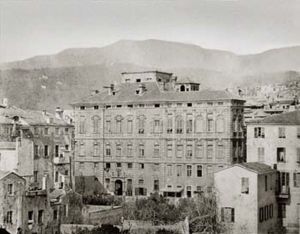 In 1805 Liguria was annexed to the French Empire: in the administrative reorganisation that followed, San Remo became a sub-prefecture. The marquis Tommaso Gio Batta Borea, 'Maire' and president of the district council, was nominated and then became sub-prefect ad interim; he was the promoter of the placing of the painting of St. Napoleon (the cult of
In 1805 Liguria was annexed to the French Empire: in the administrative reorganisation that followed, San Remo became a sub-prefecture. The marquis Tommaso Gio Batta Borea, 'Maire' and president of the district council, was nominated and then became sub-prefect ad interim; he was the promoter of the placing of the painting of St. Napoleon (the cult of 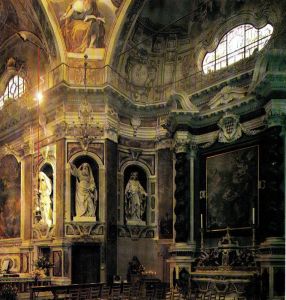 the emperor was such that he even passed as a saint!) in one of the chapels of the sanctuary of the Madonna della Costa, which took place in great pomp, in the presence of bishop Dania, on 15th August 1808.
the emperor was such that he even passed as a saint!) in one of the chapels of the sanctuary of the Madonna della Costa, which took place in great pomp, in the presence of bishop Dania, on 15th August 1808.
In 1813 Napoleon appointed the `maire' Baron of the Empire.
If the French administration had set up a modern and efficient public organisation, favoured transport with the opening of the road of the hill of Nava, the arrangement of the road of the hill of Tenda and had begun, in 1810, the construction of the coastal road of the Cornice (completed in 1827), the Napoleonic period represented years of misery, harassment and pain for the people of western Liguria. 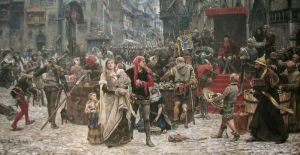
The illusion of improving their lives pushed people to show some sympathy towards the French Empire; but the harsh reality had unfortunately to make them change their opinion soon. Already in 1800 the chronicles recall that hate, immorality and terror were spreading in the valleys of the West, subjected to all sorts of violence; at the end of the year the suppression of all religious orders and the civil occupation of the convents threw the population into dismay.
The year 1812 is remembered as the most miserable year in local history: people literally starved to death, eating wild herbs to survive.
The continuous calls to arms, the fiscal oppression, which had reached unbearable limits, caused desertions and disobedience, punished with ferocious reprisals. In this sad frame of suffering and suffering, the passage of Pope Pius VII from the Riviera, returning from Napoleon's imprisonment, took on the function of a symbol, of rejection of tyranny, of the aspiration to regain freedom. Exceptional welcomes were organised everywhere, accompanied by participation and general
In this sad frame of suffering and suffering, the passage of Pope Pius VII from the Riviera, returning from Napoleon's imprisonment, took on the function of a symbol, of rejection of tyranny, of the aspiration to regain freedom. Exceptional welcomes were organised everywhere, accompanied by participation and general 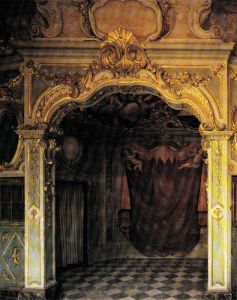 joy. The Pope arrived in San Remo on 11th February 1814, spent the night in the Borea Palace (where the room that housed him is kept, with its period decorations) and left again on the 13th.
joy. The Pope arrived in San Remo on 11th February 1814, spent the night in the Borea Palace (where the room that housed him is kept, with its period decorations) and left again on the 13th.
« As soon as His Holiness Pius VII left, the People of San Remo and the surrounding villages came to the Borea house: whoever kissed his bed, who kissed the throne, who kissed the floor and if authoritative people had not prevented them, that devout People would have divided the sheets, the coats of arms, the damasks and even the same precious sacred furnishings that had served for the celebration of the Divine Mysteries ».
On 17th April 1814, at the news of the fall of Napoleon, the populations of the surrounding villages marched on San Remo. French soldiers were attacked everywhere, the persecuted, the burnt archives, the portraits of the dictator set on fire. Already from day 15 in the city the crowd had attacked a detachment of customs officers; it was of little use to the salt and tobacco decreed by the "maire". The objective was the destruction of the documents concerning taxes and conscription, which were burnt together with the administrative books.
On 1st May 1814 San Remo asked to return to the Genoese Republic, but at the same time demanded the restitution « to the enjoyment of those rights solemnly recognised by the Emperor" and which Genoa had always ignored ».
The Restoration brought garrisons of Croatians to San Remo, « the most uncivilized, the most indiscreet, the most indiscreet and the most insatiable soldiers that could be found... that they used to steal and on the shops and in the countryside », soon replaced by other Croatians, so disciplined « that it could be said that they were all men, not 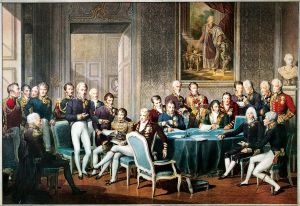
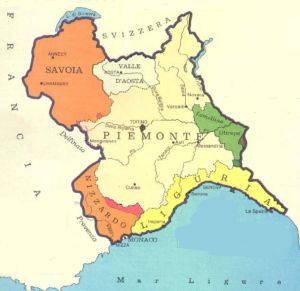 soldiers, but civilized ».
soldiers, but civilized ».
The Congress of Vienna, in December 1814, annexed Liguria to the Kingdom of Sardinia. This was the event that aroused the greatest enthusiasm in the people of Sanremo, who finally saw the end of the Genoese dominion over the city, whose excesses had not been forgotten. The city sent a delegation to Turin to confirm the joy of the people of Sanremo; then solemn celebrations were decreed, which had no equal throughout Liguria. This was the real revenge of San Remo against Genoa after the tragic events of 1753.
San Remo returned to the rank of provincial capital within the Nice Division; the newfound peace favoured the civil and economic rebirth of the city, which the wise administration of the mayor Siro Andrea Carli and the support of the intendant Alberto Nota consolidated.
However, there was no lack of calamities in the years of that century: in 1818 an earthquake and typhoid fever, in 1831 another strong earthquake tremor, described as follows in the Borea Manuscript: « It started with noise and then it made itself feel oscilatory and then undulating and lasted 15 seconds and if it lasted longer we were all gone... everyone retreated to the countryside and San Remo remained deserted ».
In the same year the city was returned to the diocese of Ventimiglia.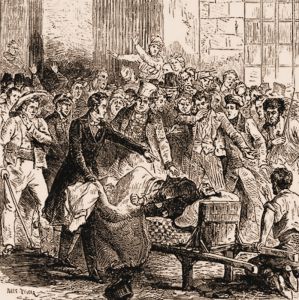 In 1835 a serious cholera epidemic sowed victims from Marseille to Genoa; San Remo was then fortunately spared and the grateful population decided solemn thanks. But the disease appeared in 1837 and this time hundreds of people died.
In 1835 a serious cholera epidemic sowed victims from Marseille to Genoa; San Remo was then fortunately spared and the grateful population decided solemn thanks. But the disease appeared in 1837 and this time hundreds of people died.
A letter dated August 26th describes the situation in the city with these dramatic accents: « Every man is aterito, evenings houses and shops, those from here and there fled, remaining almost depopulated the city full of fear and terror. For greater fear of this deigraziato country, died in the beginning the intendant Francesco Bozzanigo and the lord commander the castle Antonio Bertagna forloché not being more commanded remained the country more in prey to the thieves and to the disorder so that the fugitives doubled themselves the fugitives did not remain who healed the sick and buried the dead... ».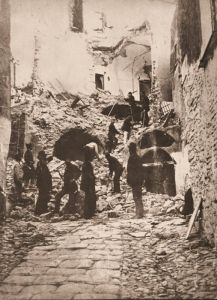 In 1887 there was another devastating earthquake. (The earthquake caused considerable damage to the town's buildings: two bell towers partly ruined, the small dome of the Madonna della Costa broke in half, and some houses in the old town collapsed completely; the old buildings were also seriously damaged. In addition to the material damage, estimated at two million lire, the town also had to suffer economic damage because the strong tremors made the town's hotels and villas practically deserted. Thousands of tourists waited near the railway station waiting for the trains, on which they left with the sad memory of the danger they had escaped. In Sanremo, however, there were no victims of the earthquake. But the most affected town in the Sanremo district was Bussana, where almost all the houses located in the district called "Rocche" collapsed. Also in Bussana, as in Baiardo where as many as 220 victims were recorded, the vault of the church collapsed where many faithful attended the religious services on Ash Wednesday).
In 1887 there was another devastating earthquake. (The earthquake caused considerable damage to the town's buildings: two bell towers partly ruined, the small dome of the Madonna della Costa broke in half, and some houses in the old town collapsed completely; the old buildings were also seriously damaged. In addition to the material damage, estimated at two million lire, the town also had to suffer economic damage because the strong tremors made the town's hotels and villas practically deserted. Thousands of tourists waited near the railway station waiting for the trains, on which they left with the sad memory of the danger they had escaped. In Sanremo, however, there were no victims of the earthquake. But the most affected town in the Sanremo district was Bussana, where almost all the houses located in the district called "Rocche" collapsed. Also in Bussana, as in Baiardo where as many as 220 victims were recorded, the vault of the church collapsed where many faithful attended the religious services on Ash Wednesday).
(taken from "Storia tascabile della Città di Sanremo", by Andrea Gandolfo).
By now Bussana was uninhabitable and its inhabitants were convinced to move to a new inhabited site more towards the sea.
The epic of the Risorgimento and the wars of independence also had the contribution of various citizens of Sanremo.
After the failure of the first Carbonari uprisings in 1821, the Albertine repression was also felt in San Remo. Many of the citizens were troubled for having shown sympathy for the constitutionalists. Among them, police reports reported the lawyer Pietro Baccini, et Doctor Giacomo Biria, dismissed from his job for his liberal ideas, the lawyer Bernardo Bonfante, considered one of the leaders of the Porto Maurizio group, the lawyer Pietro Carbone, dismissed from the office of town councillor and supervised, and several other intellectuals.
The atmosphere and irredentist feelings of the time are described in the pages of Lorenzo Benoni and 'Il dottor Antonio' by Giovanni Ruffini, which had the merit of attracting the attention and sympathy of many readers from beyond the Alps to the Riviera, as is known not only with positive reflections for future political developments, but above all for the birth of the most authentic vocation, the tourism.
Among the people of Sanremo who distinguished themselves in that period, we remember the soldier Piero Astraldi, who managed to warn his superiors of the danger that Carlo Alberto was running in Milan, after the defeat of the 'fatal Novara'; Francesco Martini, who participated in almost all Garibaldi's exploits, gaining the rank of major and some decorations in the field; Giambattista Calvino, one of the first to enter Rome from the breach of Porta Pia.
The most vivid memory is linked to the figure of Giuseppe Garibaldi, a young sailor who frequented San Remo on Captain Angelo Pesante's brig 'Costanza'.
The Hero of the Two Worlds on 26th September 1848 from the window of Pesante's house in Pian di Nave exhorted the people of San Remo not to despair in the destinies of their homeland.
On 14th April 1860, after the passage of Nice to France, he accepted the citizenship of Sanremo with the following words:
« I accept with gratitude the honourable title which counts me among the citizens of San Remo, from whom I learned at a very young age to despise the dangers of the sea...". As a citizen of San Remo, I will certainly promote the just claims of my adopted city to this end ».
(Sources: from the book “Sanremo, cuore e anima di una Città"; images from private archive and Web)
Previous 7th part




